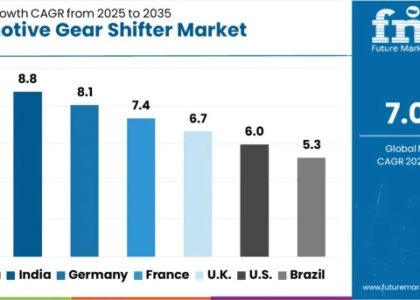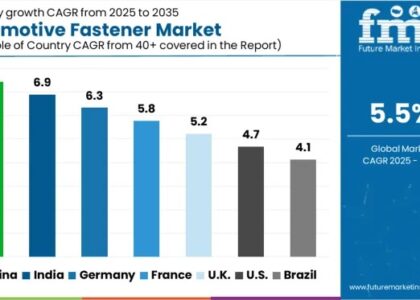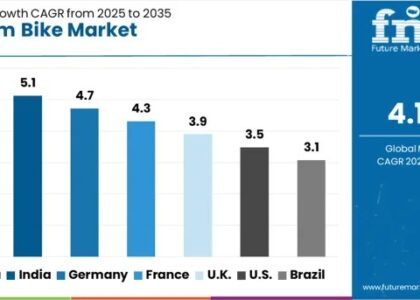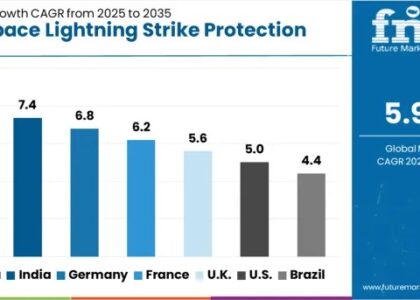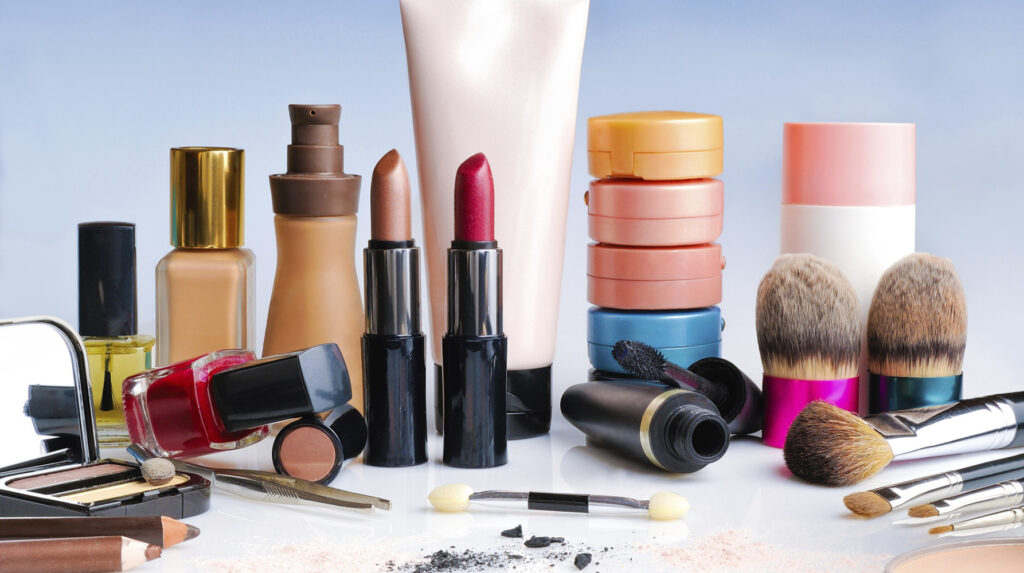
The global anti-counterfeit cosmetic packaging market is poised for exponential growth, projected to escalate from US$ 35.48 billion in 2023 to an impressive US$ 83.23 billion by 2033. This robust expansion is marked by a significant CAGR of 8.9%, driven by advancements in digital authentication and the rising demand for premium cosmetic products.
The market’s dynamics are driven by the growing demand for premium and luxury cosmetic items, propelled by the surge in eCommerce platforms. This surge has escalated concerns regarding counterfeit products, motivating manufacturers to invest significantly in anti-counterfeiting solutions. This proactive approach not only safeguards brand reputation but also assures consumers of genuine product quality, further fueling the market’s progression.
Core Concepts in the Anti-Counterfeit Cosmetic Packaging Industry
- Market Valuation (2023): The market is valued at US$ 35.48 billion in 2023.
- CAGR (2023-2033): The market is expected to grow at a CAGR of 8.9% from 2023 to 2033.
- Top 5 Players’ Market Share: The top 5 players are expected to account for 50% of the market share.
- United States Market Value (2023): The market in the United States is projected to reach US$ 10,816.6 million in 2023.
- Key Application Segment: The bottle segment is expected to drive market growth, reaching US$ 16,536.1 million by 2023.
Start Your Journey to In-Depth Understanding: Request a Report Sample: https://www.futuremarketinsights.com/reports/sample/rep-gb-12677
The anti-counterfeit cosmetic packaging industry offers a wide range of packaging formats and materials, including bottles, tubes, jars, and pouches. Among these, plastic is the most commonly used material due to its versatility, cost-effectiveness, and ease of customization. In addition, tamper-evident features, such as shrink bands, seals, and labels, are becoming increasingly popular as they help prevent product tampering and counterfeiting.
The Asia Pacific region is expected to emerge as an extensive market for anti-counterfeit cosmetic packaging solutions in the coming years, owing to the presence of several cosmetic manufacturers in the region and the growing demand for premium and luxury cosmetics. In addition, Europe and North America are also expected to witness significant growth due to the high level of awareness regarding counterfeit products and stringent regulations governing the cosmetics industry.
The anti-counterfeit cosmetic packaging industry faces several challenges, including the high cost of implementing anti-counterfeit measures, the lack of standardization in regulations governing the industry, and the difficulty of implementing effective measures in global supply chains. However, these challenges also present opportunities for players in the industry to innovate and develop new and more effective anti-counterfeit solutions. In addition, the increasing demand for eco-friendly and sustainable packaging solutions is expected to create new opportunities for growth in the coming years.
Key Takeaways from the Anti-counterfeit Cosmetic Packaging Market:
- Plastic packaging is the dominant segment in the anti-counterfeit cosmetic packaging business, with a projected value of US$ 23,986.4 million in 2023.
- Based on the packaging format, bottles are estimated to be worth US$ 16,536.1 million in the anti-counterfeit cosmetic packaging industry by 2023.
- In the anti-counterfeit cosmetic packaging industry, skincare products are expected to reach a valuation of US$ 13,444.5 million.
- With a market value of US$ 10,816.6 million in 2023, the United States is estimated to have the leading market share in the anti-counterfeit cosmetic packaging sector.
- Brazil’s anti-counterfeit cosmetic packaging sector is anticipated to be worth US$ 4,573.4 million in 2023.
- In 2023, Germany’s anti-counterfeit cosmetic packaging market is anticipated to be worth US$ 10,600.3 million.
- In 2023, China’s anti-counterfeit cosmetic packaging market is expected to reach US$ 6,909.0 million.
Purchase Now to Access Segment-specific Information and uncover Key Trends, Drivers, and Challenges: https://www.futuremarketinsights.com/checkout/12667
Collaboration is Key: How Strategic Partnerships are Driving Innovation in the Anti-Counterfeit Cosmetic Packaging Industry
The competition in the anti-counterfeit cosmetic packaging industry is dynamic and highly fragmented, with numerous players vying for market share. The industry is characterized by the presence of both substantial and small players, who offer a wide range of packaging solutions to cater to the diverse needs of cosmetic brands.
The key players in the industry include Avery Dennison Corporation, CCL Industries Inc., 3M Company, and DuPont, among others. These companies are focused on expanding their product portfolio, enhancing their distribution network, and investing in research and development activities to remain competitive in the market.
In addition, the use of innovative technologies, such as smart packaging solutions, is becoming increasingly important for players in the industry to differentiate themselves from their competitors. Smart packaging technologies, such as RFID and QR codes, enable consumers to verify the authenticity of the product and enhance their overall experience. Companies are investing heavily in the development of new and more advanced smart packaging solutions to stay ahead of the competition.
Partnerships and collaborations between packaging companies and cosmetic brands are becoming more common, as they allow for the development of customized packaging solutions and strengthen the market position of both parties. Companies are also investing in sustainable packaging solutions, as eco-friendly and biodegradable packaging is becoming a key competitive differentiator. Moreover, companies that can effectively differentiate themselves through the use of innovative technologies, sustainable packaging solutions, and strategic partnerships are likely to emerge as key players in the industry.
Key Segments:
By Technology:
- RFID
- Security Inks & Printing
- Security Seals
- Holograms
- Mass Encoding
- Barcode
- Digital Encryption & Serialization
By Packaging Format:
- Bottles
- Jars
- Tubes
- Sachets
- Pumps & Dispensers
- Others
By Material:
- Glass
- Paperboard
- Metal
- Plastic
- Polyethylene (PE)
- Polypropylene (PP)
- Polyethylene Terephthalate (PET)
- Others
By Application:
- Skincare
- Hair Care
- Makeup
- Fragrance
- Nail Care
Request Report Methodology: https://www.futuremarketinsights.com/request-report-methodology/rep-gb-12677
About Future Market Insights (FMI)
Future Market Insights, Inc. (ESOMAR certified, recipient of the Stevie Award, and a member of the Greater New York Chamber of Commerce) offers profound insights into the driving factors that are boosting demand in the market. FMI stands as the leading global provider of market intelligence, advisory services, consulting, and events for the Packaging, Food and Beverage, Consumer, Technology, Healthcare, Industrial, and Chemicals markets. With a vast team of over 400 analysts worldwide, FMI provides global, regional, and local expertise on diverse domains and industry trends across more than 110 countries.
Contact Us:
Future Market Insights Inc.
Christiana Corporate, 200 Continental Drive,
Suite 401, Newark, Delaware – 19713, USA
T: +1-845-579-5705
For Sales Enquiries: sales@futuremarketinsights.com
Website: https://www.futuremarketinsights.com
LinkedIn| Twitter| Blogs | YouTube


